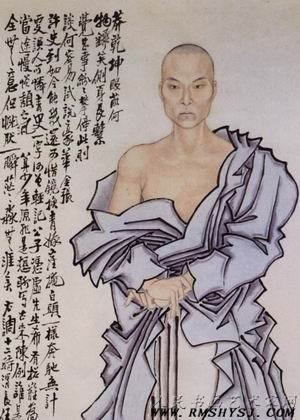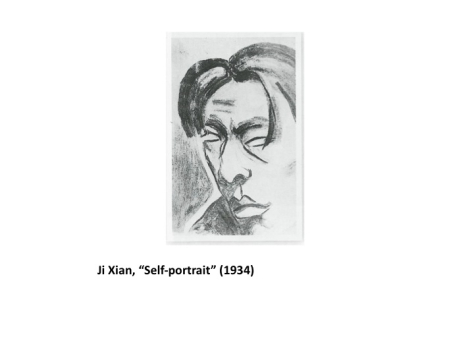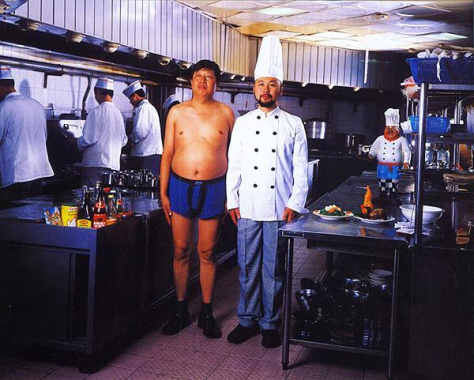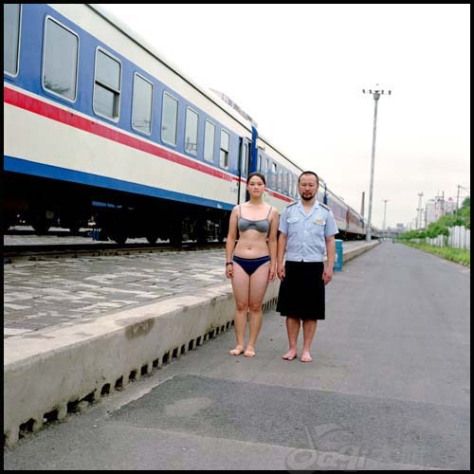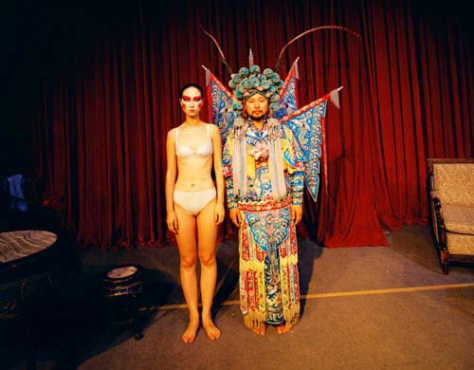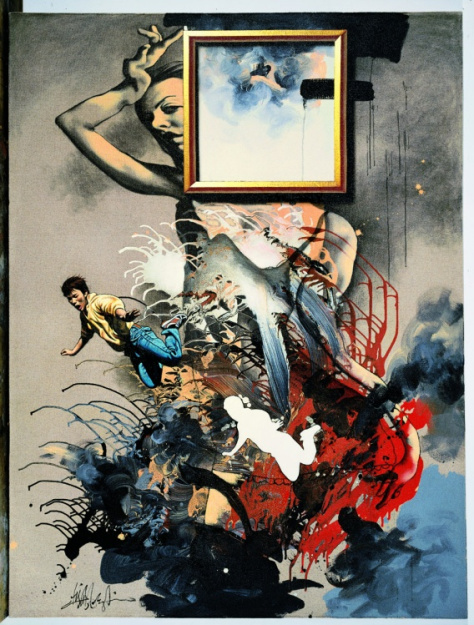Working as well, of late, on a documentary film concerning Zhong Biao and the soon-to-be-demolished Blackbridge (Heiqiao) art district in Northeast Beijing. The documentary project, its own configuration of possibilities and pitfalls, at the very least calls to mind the problem of re-presenting “reality” in some sense. And this “reality” leads me back to Zhong Biao’s method of using photographs as the basis for his creations.
The photographs, many of which he has taken himself, are like a database of raw information–elements or building block that form the basis of his. However, unlike bricks of concrete structures, the images are abstractions (excerpts), snapshots from “reality” on the other side of the lens that float freely in time and space. In years past, the photographic snippets appeared mostly in urban settings, often painstakingly reproduced in minute detail. Now, as Zhong Biao has moved to abstract method, the figures of his paintings appear amidst dynamic swathes of color and texture, as in this unfinished work:
Still the question arises: how do particular images rise to the forefront of the artist’s mind? In just a few short days during his visit to the Seattle area in 2006, Zhong Biao took 100s of pictures, a few of which are of my children:
Some of these have ended up in paintings, like “Mirage” 海市蜃楼 from 2009:
while others have not. The key to his creative process lies in his selection, at any given point in time, of one image over another.











